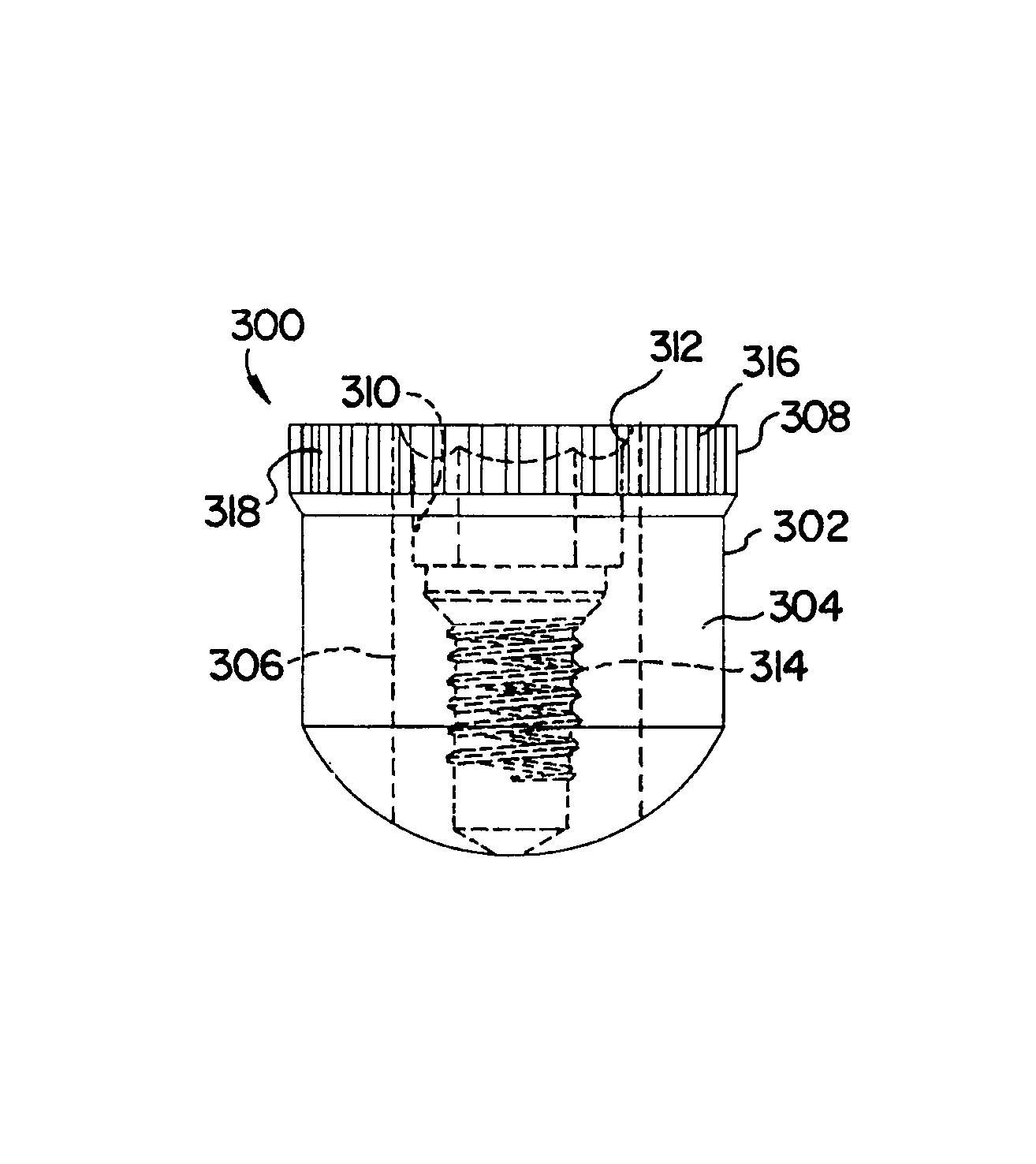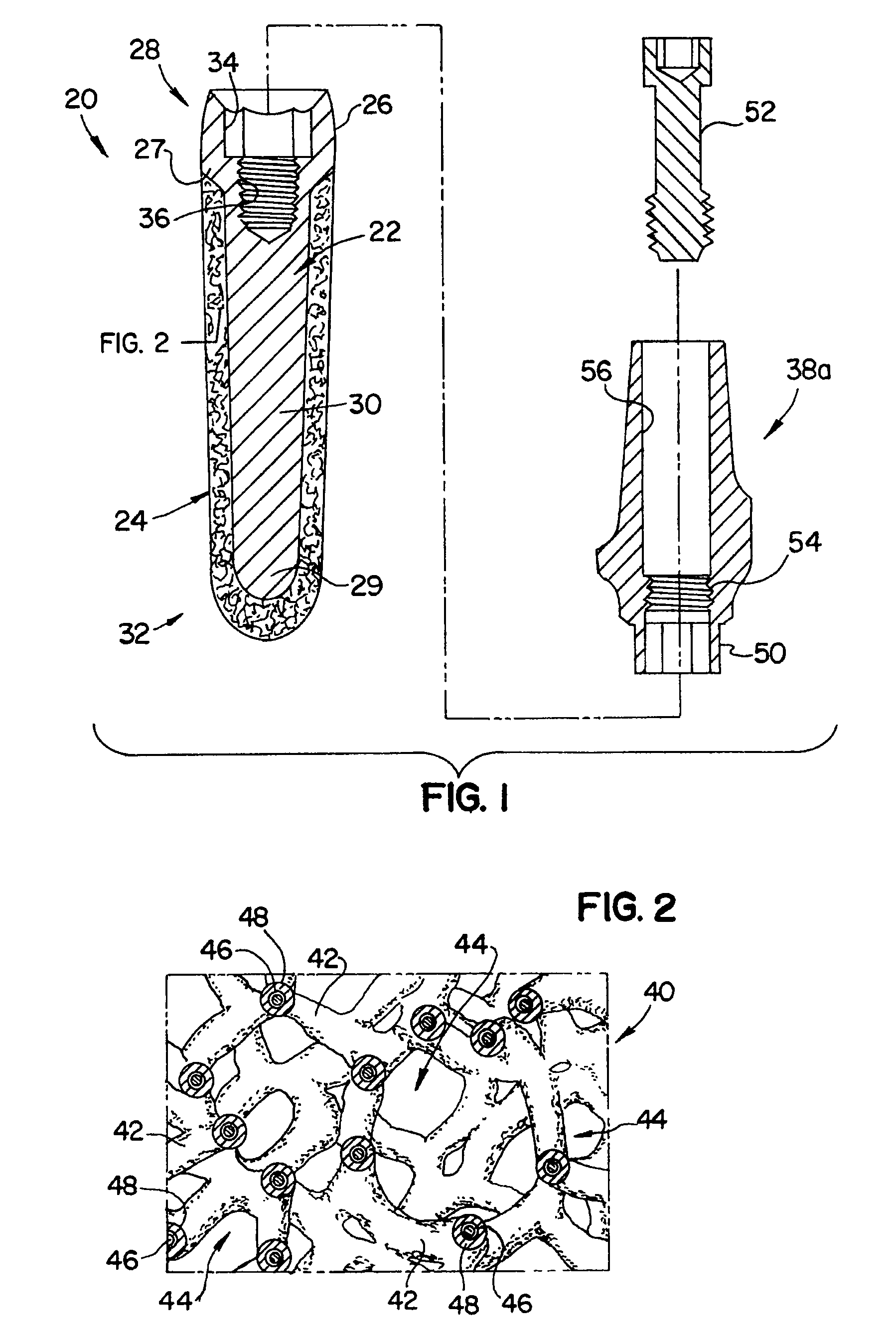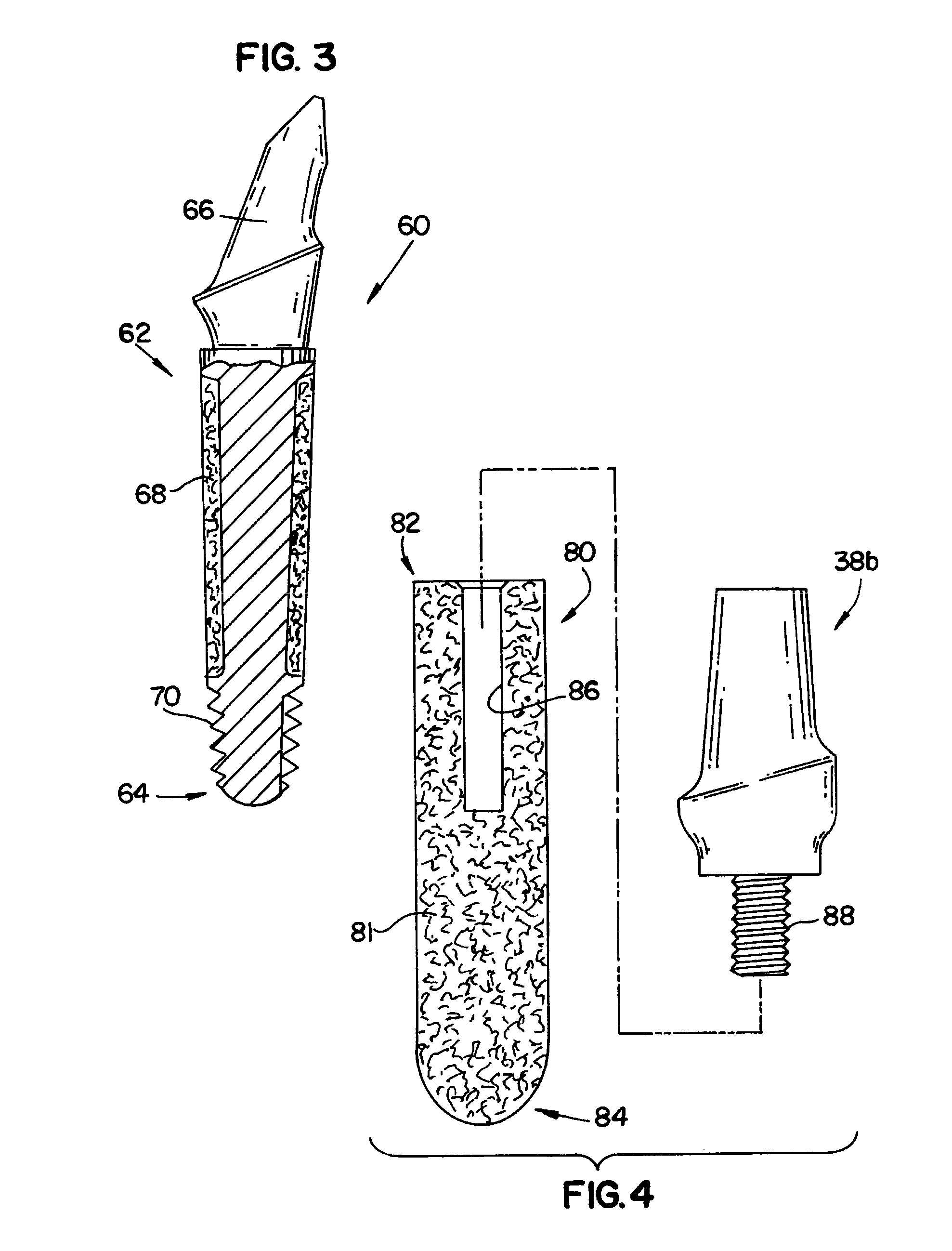Dental implant for a jaw with reduced bone volume and improved osseointegration features
a technology of bone volume and dental implants, applied in dentistry preparations, medical science, medical preparations, etc., can solve the problems of difficult to achieve optimal esthetics, complicated implant placement, and quite involved surgical procedures, and achieve the effect of reducing the bone volume regions of the jaw
- Summary
- Abstract
- Description
- Claims
- Application Information
AI Technical Summary
Benefits of technology
Problems solved by technology
Method used
Image
Examples
second embodiment
[0056]Referring to FIG. 3, there is illustrated an implant. Implant 60 according to another embodiment of the present invention is shown as a “single-piece” implant which includes both an implant body and an integral abutment portion. Implant 60 may be formed of titanium, for example, and the body thereof includes proximal end 62 and distal end 64, with abutment portion 66 integrally formed with implant 60 and projecting from proximal end 62 of implant 60. Implant 60 includes sleeve 68 of porous tantalum disposed therearound, similar to implant 20 of FIG. 1 discussed above. Distal end 64 of implant 60 includes a thread 70 for initial anchoring or securement of implant 60 within a bore (not shown) drilled into the jaw bone of a patient. After initial anchoring of implant 60 into the bore via thread 70, a temporary prosthesis (not shown) may be secured to abutment portion 66 while a final prosthesis is fashioned. The bone-engaging portion of implant 60 may be generally cylindrical or ...
PUM
 Login to View More
Login to View More Abstract
Description
Claims
Application Information
 Login to View More
Login to View More - R&D
- Intellectual Property
- Life Sciences
- Materials
- Tech Scout
- Unparalleled Data Quality
- Higher Quality Content
- 60% Fewer Hallucinations
Browse by: Latest US Patents, China's latest patents, Technical Efficacy Thesaurus, Application Domain, Technology Topic, Popular Technical Reports.
© 2025 PatSnap. All rights reserved.Legal|Privacy policy|Modern Slavery Act Transparency Statement|Sitemap|About US| Contact US: help@patsnap.com



